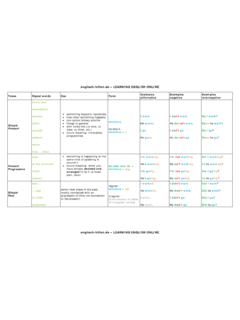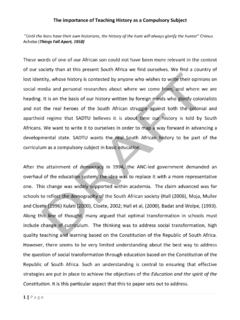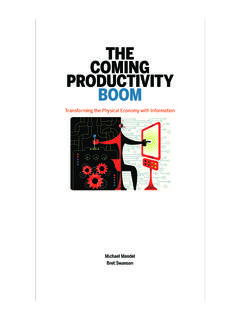Transcription of Letter of Medical Necessity for M Date: July 1. 2006
1 Letter of Medical Necessity for M_____ date : July 1. 2006 Client: M Diagnosis: Late onset Tay-Sach s To whom it may concern: Below please find a detailed assessment, Medical justification and equipment recommendations for M. who was referred to us for wheelchair evaluation, prescription and fitting. Our client presents as a 54 year old male with a diagnosis of late onset Tay-Sach s disease with onset approximately 8 years ago. He does not have any other significant Medical problems. The diagnosis is progressive and he has noted a steady decline in function in the past 3 years. Approximately 3 years ago the client was able to ambulate with a cane and able to walk functional distances. Currently, the client is using a rolling walker (nonfunctional distances) and a manual wheelchair. He recently fell and injured his right shoulder which is hindering his transfer ability and mobility.
2 He has had frequent falls in the past and is now relying more on the wheelchair. His family pushes him in the wheelchair because he gets fatigued with propelling and also has upper extremity weakness. The client weighs 160 lbs. and is 5 9 . He tried a friend s Pronto power wheelchair in the winter and found that he was able to do more ADLs and had improved independent mobility. He presents to clinic with the goals of independent mobility in a wheelchair, increased work time, improved ADLs and improved energy conservation. The wheelchair needs to be accessible in the client s home, transportable and able to navigate outdoors for work outside of the home, which he does. The client lives with his wife and a young teenage son in a two story house. His bedroom and office is upstairs but there is a stair lift which allows him to access his bedroom and hospital bed and bedside commode. The first floor is accessible.
3 The client can perform the majority of his own ADLs, which he does in the morning, although it takes a long time and is difficult. He was ambulating into the bathroom with the rolling walker, but due to increased falls it is recommended that he increase his use of the wheelchair for these activities unless another person can be present to physically assist him. He takes frequent rest breaks throughout the day due to fatigue. He has a mini van and is using hand controls to drive. He will require additional modifications to the van for transport of a power wheelchair for him to maintain his maximum level of independence. He can transfer independently only if the surface has a seat to floor height of 24 minimum, but it is very difficult and he must lock out his knees. We practiced transfers from various heights; he was unable to transfer from 23 seat to floor height. From 24 seat to floor height the transfer was very difficult and very unsafe.
4 Transfers from 25 seat to floor height was much easier and safer for him to perform without assistance. He does have to lock out his knees for all transfers. M. has been employed selling filtration systems and equipment outside his home until his recent decline in mobility which has restricted him to making sales calls from home. The provision of the proper powered mobility system will allow him to return to his previous level of function at work. In addition, M has been unable to transfer in and out of a car or his van due to fatigue after trying to propel the existing manual wheelchair. We practiced transfers from his current wheelchair and he was unable to do so without assistance. The majority of surfaces he sits on are too low for him to get off of. He also has a ramp at home, but is unable to propel up it due to weakness and fatigue. We also practiced ramp mobility at the clinic visit and he was unable to safely propel himself up any inclined surface.
5 Upon evaluation of sitting posture on a level surface it was noted that the client has good sitting balance statistically and dynamically. His spine is symmetrical and lacks mobility in the lumbar area. It is flexible with moderate resistance. He has full PROM of all joints, functional active ROM, but lacks strength in both upper extremities and both lower extremities. His pelvis is also symmetrical. He stated that he experiences frequent cramps in his arms and legs, along with joint pain and stiffness. His biggest difficulties are transfers, fatigue (endurance), and generalized weakness. It was noted that he also suffers from bilateral hand tremors. Our recommendation is that the following be provided: Quantum Rehab 600 power wheelchair base (mid-wheel drive) with 3-key remote plus 70 amp multiple profile Penny & Giles electronics. Swing away mount for joystick with stick handle and right control, and flat free inserts for drive wheels (for durability and ease of use).
6 Motion Concepts TRx Uplift system with synchronized back and foot platform and 45 degrees of tilt (pt. requires anterior tilt to consistently achieve independent transfers out of his power wheelchair), TRx elevating module with 7 elevation (to access the environment and assist with transfers), flat desk length arm pads, TRx enhanced 3-5 function control box with quad push button (ability to convert wheelchair to other options as his disease is progressive), Reduced drive with elevation of seat (to be able to safely drive the wheelchair while the seat is elevated), 2 MK group 22NF batteries and transfer handles. The cushion recommended is We expect the following outcomes: Decreased risk of falls with the use of power wheelchair for maximum mobility. Comfortable seating and cushion for pressure relief and improved sitting tolerance. Ability for rest breaks frequently while in wheelchair to improve energy conservation.
7 Proper back support to continue with symmetrical supported pelvis and trunk Independent wheelchair mobility. Increased independence with ADLs and IADLs from a wheelchair level to improve ease, reduce time required and decrease falls by providing an adjustable seat to floor height to make transfers safer and to enhance reaching ability. Improved accessibility in home and outside environment. Increased sales calls outside of home to increase business, maintain gainful employment and also pt. satisfaction. Ability to transfer in and out of vehicle independently thereby increasing his ability to enter the community. If you have any questions, please feel free to call me at _____. Evaluator Name:_____ Evaluator Signature:_____ Physician name:_____ Physician Signature:_____ Wheelchair Representative (RTS)_____














